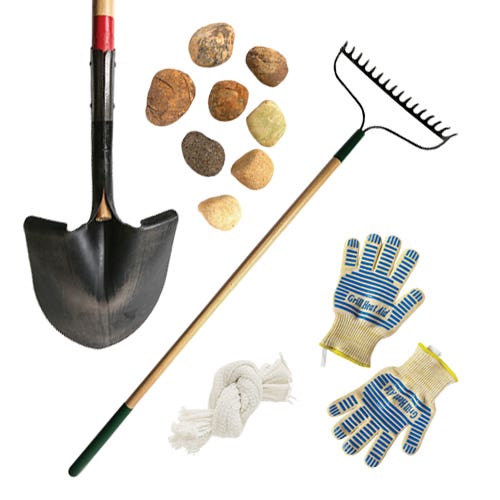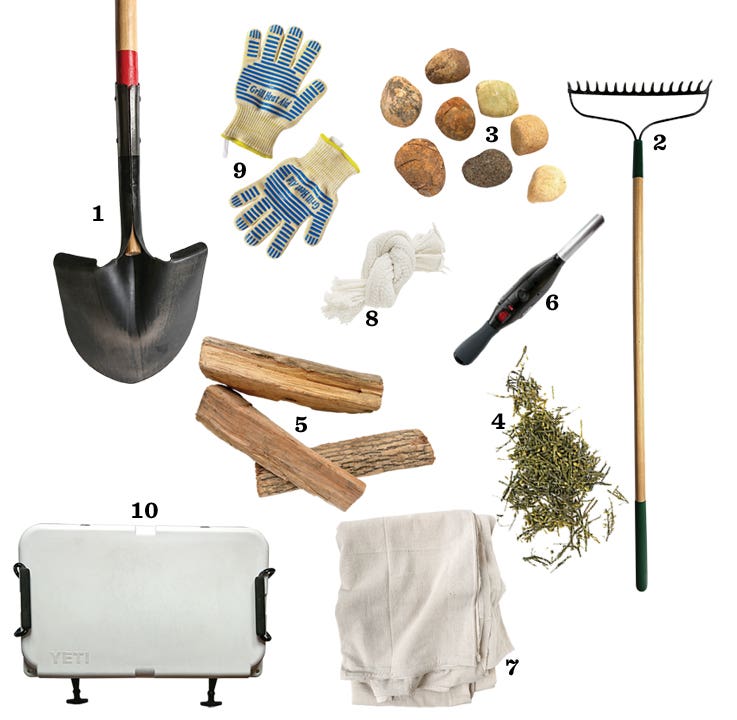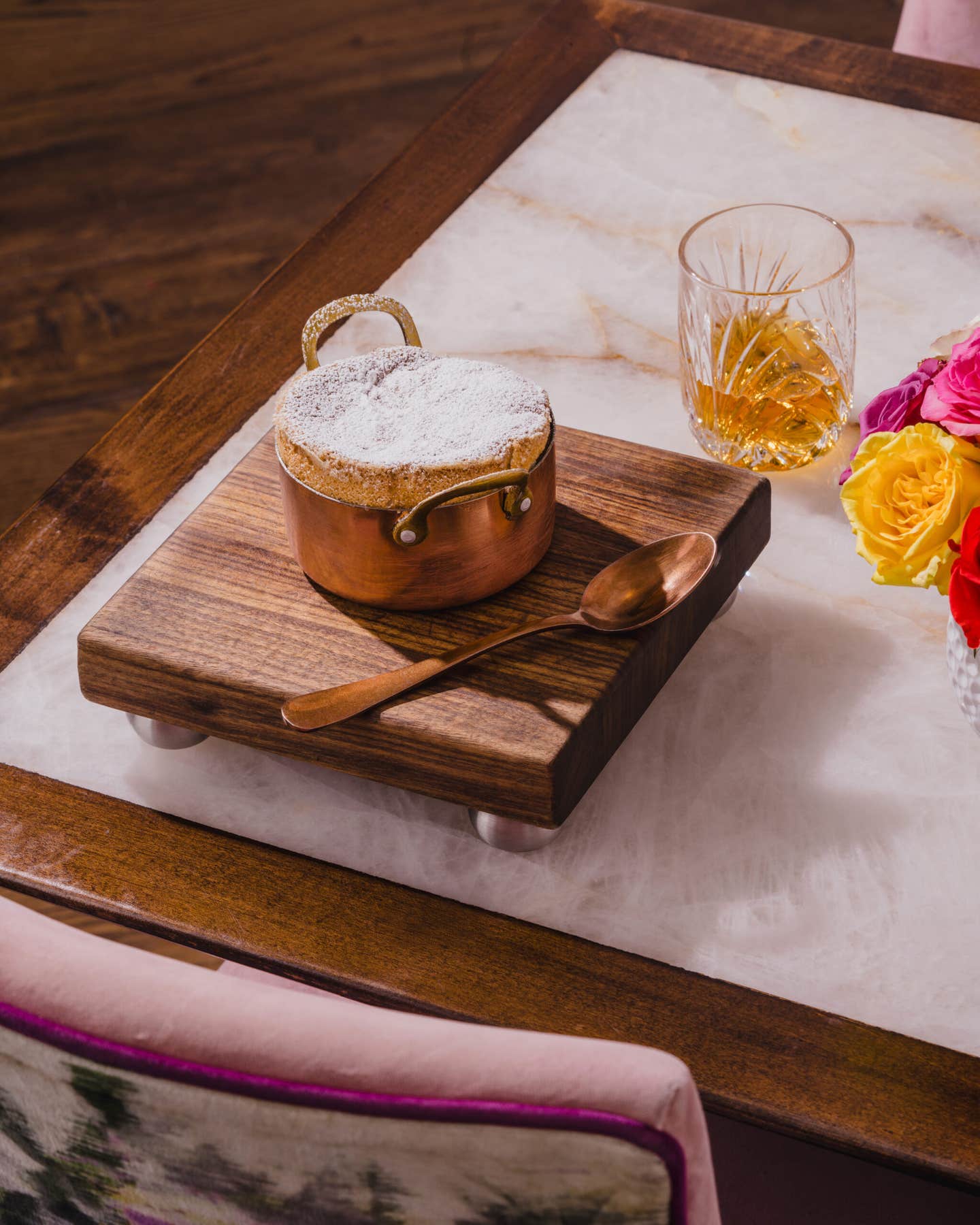
Clambake Toolbox
Much of the work for a clambake is gathering the materials. Here are our favorite tools for the job; for step-by-step instructions on the whole process, see Jasper White’s story A Seaside Supper, from our June/July 2014 issue.

To dig your pit, it's essential to have a (1) heavy-duty metal shovel like this wood-handled Razor-Back from Home Depot ($22; homedepot.com), and it's also good to have a (2) metal-tipped rake ($10; homedepot.com) to distribute embers.
(3) Large smooth stones and seaweed are the building blocks of a clambake fire pit. If your beach doesn't have them, pack the trunk with metal firebricks ($35 for six; lowes.com) and (4) hand-harvested rockweed (seaweed) ordered from coastal Maine (30 pounds for $65; vitaminseaseaweed.com).
Instead of building a fire with salt-saturated driftwood, which burns too slowly, use split (5) kiln-dried firewood for a quick, even heat ($5 for 25 pounds; homedepot.com).
Even on the windiest day, the torchlike (6) Bison Airlighter will ignite a fire with its powerful four-inch-long flame ($99; thebisoncompany.com).
Soaking a heavy, densely threaded, six-by-nine-foot (7) canvas tarp in seawater and covering the fire pit with it bathes the clambake in briny steam ($11; homedepot.com).
To aid safe, speedy recovery of your meal, cook smaller items in flexible mesh (8) clambake bags ($9 for 100; amazon.com), and retrieve food from the fire pit with (9) heat-resistant gloves like these from Heat Aid that can withstand temperatures up to 662 degrees Fahrenheit ($35; amazon.com).
It may take up to four hours to cook down a hardwood fire and heat beach rocks, so keep perishable food items in a (10) well-insulated cooler like this sleek Tundra 65 Cooler from Yeti ($400; yeticoolers.com); it also has plenty of room for beer.
Keep Reading
Continue to Next Story










